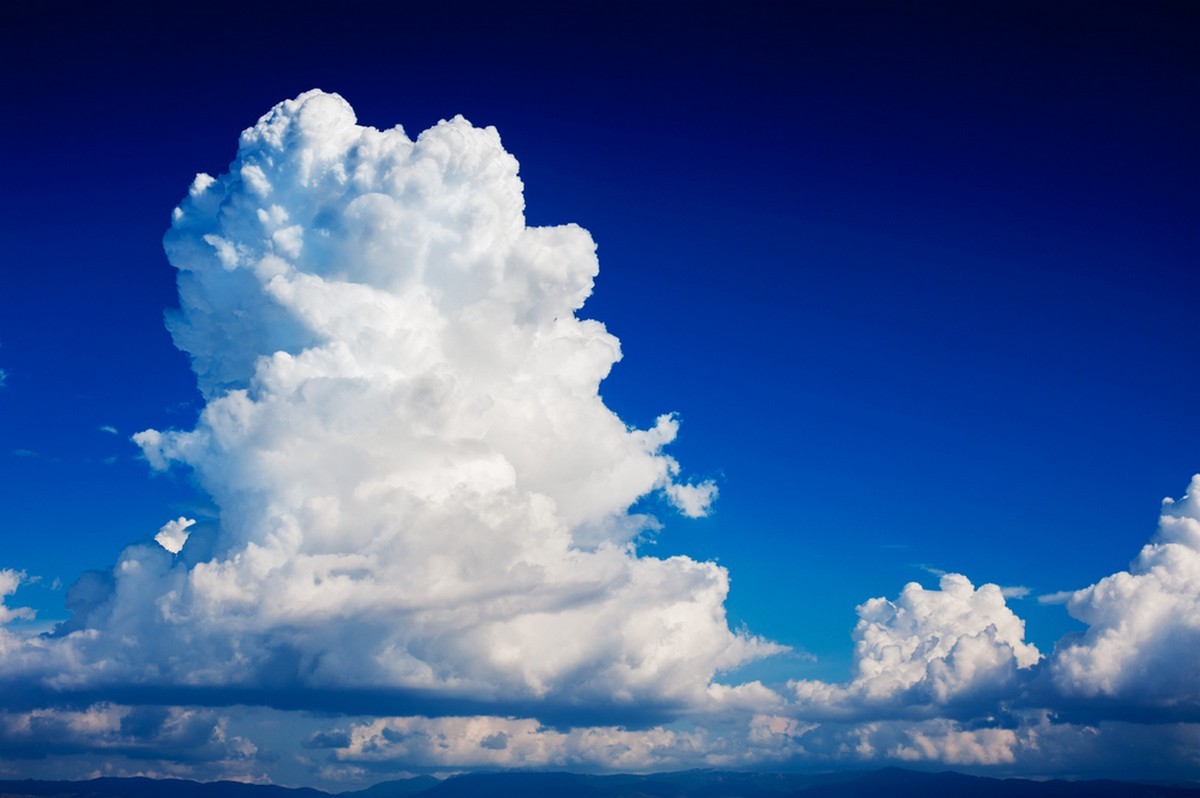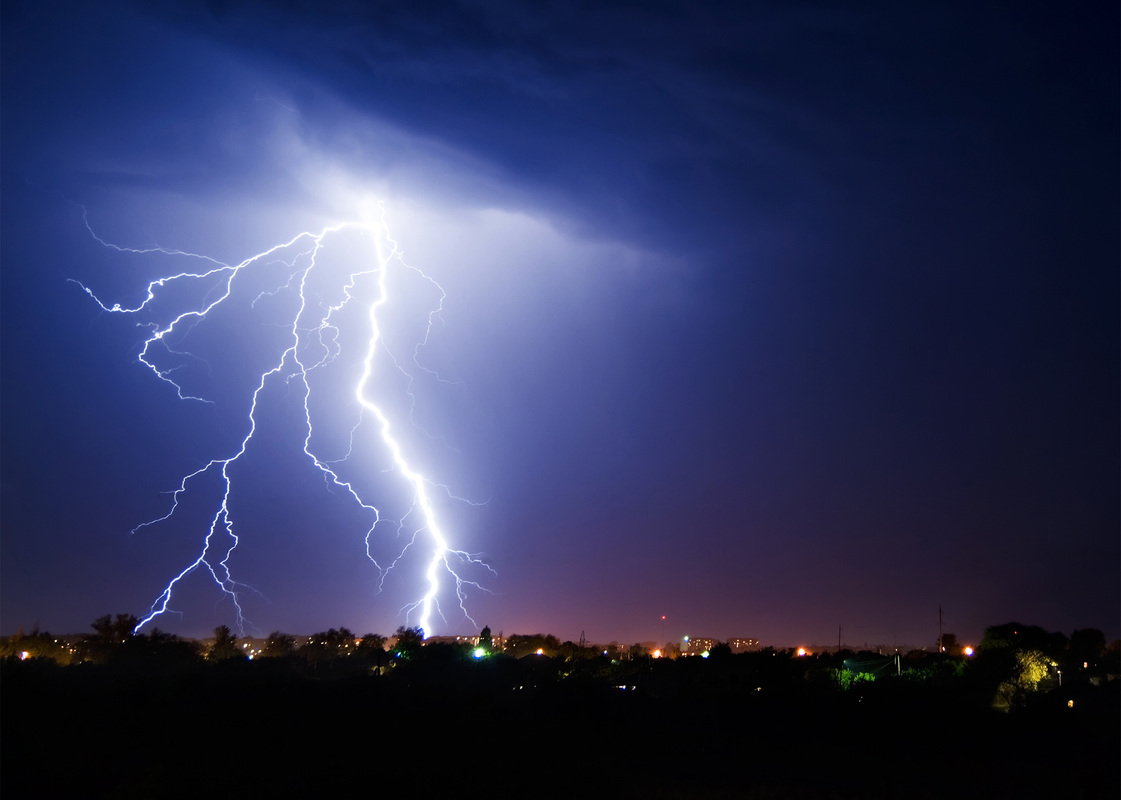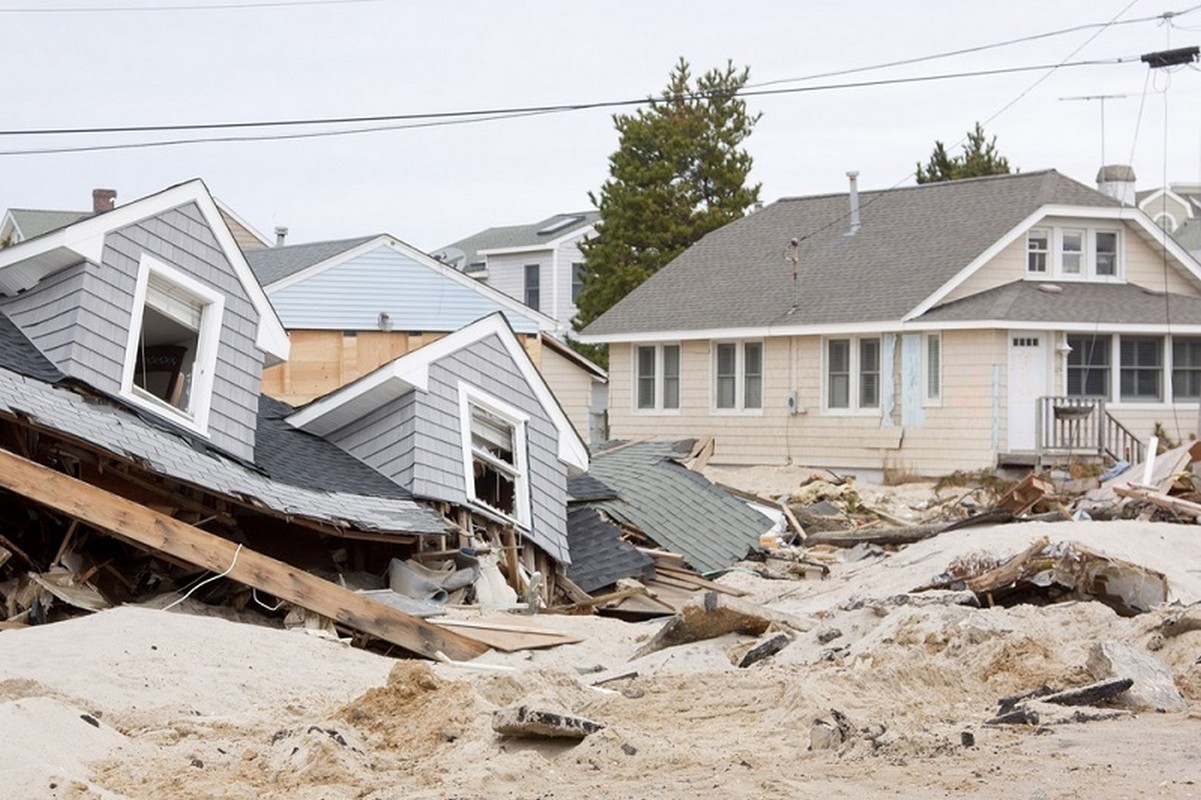12. Weather
Contents
12.1 Climate or weather?
Weather and climate are terms that are very close to one another, and it may sometimes be difficult to differentiate between the two.
Weather is a term that signifies the temporary climatic conditions in the planet's atmosphere. In contrast, climate refers to long-term atmospheric conditions.
Weather consists of a variety of different things. These include air temperature, air pressure, moisture, wind speed, wind direction, cloud cover and rainfall.
![]() Real-time map of clouds over Europe
Real-time map of clouds over Europe
12.2 Wind
 Winds are large-scale movements of air. They transport heat and moisture from one place to another. Because of this, wind direction and wind speed are important climatic factors.
Winds are large-scale movements of air. They transport heat and moisture from one place to another. Because of this, wind direction and wind speed are important climatic factors.Winds are formed when air flows from an area of high pressure to an area of low pressure.
Some winds are temporary, wheras some are constant. Constant winds are known as planetary winds. Examples of planetary winds include the European west wind, as well as trade winds that flow near the planet's equator.
The link below leads you to a website where you can study a real-time map of Earth's winds.
12.3 Rain
 Rain is formed when wet and warm air rises and cools down.
Rain is formed when wet and warm air rises and cools down. When the air reaches a relative humidity of a hundred percent, also known as the dew point, the water vapor contained in it begins to condense into small cloud droplets. Finally, when these cloud droplets have achieved a great enough mass, they fall down in the form of raindrops.
Rains can be divided into three main types depending on the factor that causes the rising air flow.
12.3.1 Convection rain
The most common rain type is called convection rain. It is created when the Sun warms up the surface of the Earth.
As air heats up, it begins to rise. As it rises, the air becomes colder. Finally, the air eaches the dew point and the moisture contained within it begins to condense into cloud droplets. When these droplets accumulate enough mass, they begin to fall down as rain.
Convection rain is especially common in planet Earth's tropical zone. The afternoon rain common to rainforests is an example of convection rain. In Europe, convection rains usually occur during the summer months, and often take the form of thunder storms.

Convection rain begins to form when humid air ascends. Tall cumulus clouds (pictured) are formed during this process.
12.3.2 Orographic rain
As the air ascends on the mountain slope, it begins to cool down. The air reaches the dew point, and the condensed moisture falls down in the form of orographic rain.
12.3.3 Frontal rain
When a mass of warm air collides with a mass of cold air, the warm air begins to rise over the cold air. The cold air mass therefore fulfills a similar function in frontal rain as mountain ranges do in orographic rain.
12.4 Thunderstorms
There are two types of lighting. Cloud lightning occurs inside the thundercloud, whereas ground lightning takes place between the thundercloud and the ground.
The electric charge of a thundercloud is extremely strong. When this charge is released, the air becomes extremely warm. The sudden heating up of air creates the flash of light that can be distinguished as a bolt of lightning and the explosive sound of thunder.

12.5 Tropical storms
Tropical storms are cyclical. In America, tropical storms are called hurricanes. In East Asia they are called typhoons, whereas near the Indian Ocean they are called tropical cyclones.
Tropical storms receive their energy from the warm ocean water of the tropical zone. When the temperature of surface water exceeds 26 ˚C, water begins to evaporate at a great rate. This results in a strong upward surge of warm air. This, in turn, results in strong, cyclical winds. When this happens, a tropical storm has formed. Tropical storms can be formed only between the latitudes of 5–30˚ South or North.
In the Atlantic and Indian Oceans, the water is warm enough for tropical storms to form during late summer and early autumn. In the Northern Hemisphere, tropical storms occur between August and October, whereas in the Southern Hemisphere they take place between February and April. In Pacific Asia, typhoons can occur throughout the year.

Tropical storms do not follow regular paths. The wind speed of a tropical storm can reach up to a staggering 85 m/s. An area of high pressure can occur near the center or "eye" of the storm. Hurricanes can reach the size of up to 1000 kilometers in diameter.

A satellite image of a hurricane. Hurricanes can grow up to a thousand meters in diameter.
When a hurricane arrives on land, its strong winds can cause significant damage. In addition, hurricanes can cause large waves, floods and mudslides. After a tropical storm has passed, the most significant problem to a hurricane-stricken area is the possibility that its drinking water becomes contaminated with diseases carried in the storm water.
The development of hurricanes can be distinguished at an early stage with weather satellites. In addition, the direction and speed of their movement can be predicted, which makes preparation in the endangered regions easier. Tropical storms often necessitate evacuations.

Hurricane damage in the Eastern United States.
![]() Real-time map on tropical storms
Real-time map on tropical storms
12.6 Tornadoes
A tornado is a storm that has a rotating cone shape. Its diameter can range from tens of meters to hundreds of meters. If a tornado touches land or water, it can suck material into itself. Tornadoes are short-term climatic phenomena: their time frame ranges from a couple of minutes to a couple of hours.
Summary
- Weather means the temporary climatic conditions of the Earth's atmosphere: it consists of factors such as temperature, air pressure, wind, and precipitation.
- Wind is air that flows from an area of high air pressure to an area of low air pressure.
- Rain is formed as warm, humid air rises into higher altitudes. In high altitudes, the air cools down, and the moisture contained within it is condensed into droplets that eventually gather enough mass to fall back down to the surface of the Earth.
- Convection rain is created when humid air is warmed up by the Sun.
- Orographic rain is created when a coastal mountain range forces moist air flowing from the sea to rise.
- Frontal rain is created when a cold air mass meets a warm air mass and the warm air rises above the cold air mass.
- Tropical storms occur in the tropical zone.
- Key words: weather, wind, rain, lightning, tropical storm, tornado.
